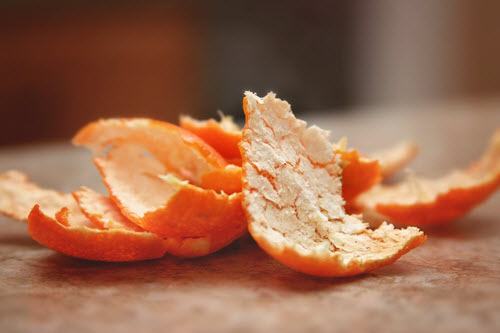The next time you eat an orange or sweet lime, don’t throw away the peels. Your garden plants can greatly benefit from them. In this post, we take a look at the benefits of using citrus peel in your garden and how you can use them effectively.
Awesome Benefits of Using Citrus Peel in your Garden

Composting Ingredient
Citrus peels are a good source of nitrogen, phosphorus, and potassium. If you make your own traditional compost at home, throw them in your composting bin. Make sure to chop them into tiny bits before composting as it will degrade faster. If however, you do your own vermicomposting, it is best to avoid using peels in that, as many worms will not eat them.
Pest Repellent
Pests can play havoc with your plants and since you want to avoid using chemical pesticides, citrus peels offer a natural solution. Simply place the peels near the affected plant or near an affected area of the plant. Most pests like aphids strongly dislike the smell of the citrus and will vacate the plant.
(This will only work on mild infestations. You may need to use other organic options to rid yourself of larger infestations.) If you have a pet cat or dog, the peels will definitely keep them away from your plants as well.
Acidify the Soil
Some plants like radishes and peppers love an acidic soil. If you have acid loving plants in your garden, dry the citrus peels, powder them and sprinkle them in the soil. This will increase the acidity of the soil and supply it with other nutrients as well.
Get Rid of Ants
Ants can be a real problem in a terrace garden, especially since the tend to damage the plant roots and protect pests like aphids from getting attacked by ladybugs. Lemon peels are the natural enemies of ants and adding these to your plants is a great, non toxic way to get rid of the buggers.
Seed Starter
If you’re in need of an organic seed starter, you can use the citrus peel as a base for your seedlings to hatch. Just poke a small hole at the bottom of the peel for drainage, fill it with a good potting mix, add your seeds and sprinkle some water and when your seedlings are ready or transplanting, just put the seedling, peel and all into the soil. The peel will compost directly in the soil and add further nourishment to the plant as it grows.
Mosquito Repellent
Mosquitoes apparently hate the smell of citrus. If you want to get rid of them, rub the peels on your skin or place them around your garden or patio and you should keep them away. I haven’t tried this myself, but if you did, let me know how you fared in the comments section.
Attract Butterflies
Citrus peels may be a turn off for some creatures, but it can attract butterflies to your garden. Just leave the peels in a shallow dish and their sweet scent and leftover juices will attract the butterflies. This will add some color and ambience to your garden and help in pollinating your plants as well.
Make an Organic Bird Feed
If you love to have the birds stopping by your garden, you can make a homemade bird feeder using Citrus peels. With just a string, some peels and birdseeds, you can make one creatively as explained by Kelly in this article at MNN.
Know any more handy uses and benefits of using citrus peel in your garden? Let us know in the comments section.
Leave a Reply